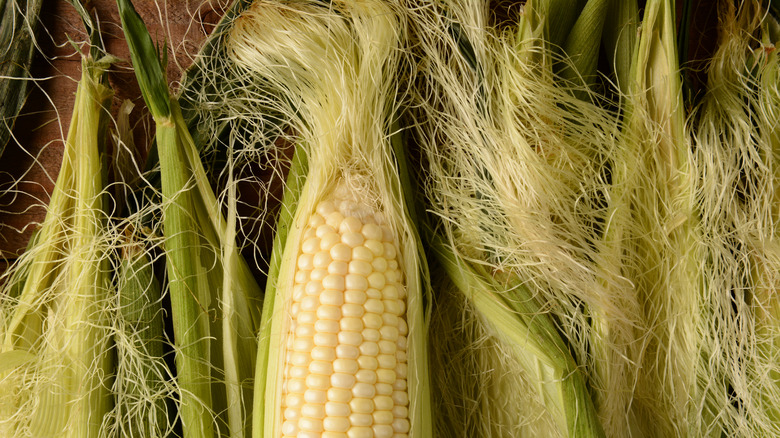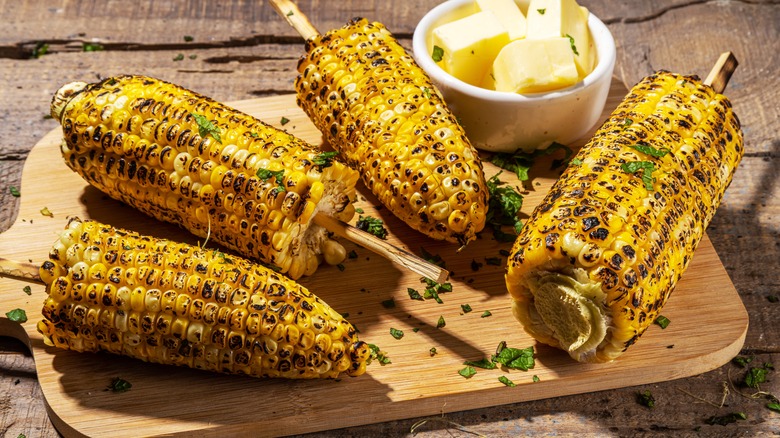Pick Out The Best Corn Possible With The Silk Test
Here's a conundrum: You're shopping for a dinner party and need to bring home a whole armload of corn. Maybe you're making no-cook sweet corn soup or Mexican-style elote asado for a crowd; the main thing is that you need this produce to be as sweet and fresh as possible. Of course, there's an old-fashioned way to ensure this: Just pull back that husk and take a gander at those juicy kernels. But, unfortunately, groceries and farmers markets are getting hip to your tricks, and more and more frequently, you'll see signs warning you against checking under the husk. What, then, is the discerning corn buyer to do?
The good news is that you don't actually have to peek under the hood to gauge corn's freshness, anyway — there are plenty of other cues to look for. Chief among them? The corn silk spilling out of the top of the cob, which should give you a good idea of the corn's quality. If the silk is pale green, white, and/or golden — in other words, if it looks fresh — that means the corn is fresh, too. If it's black, matted, and/or slimy, that's an indication of corn that's been sitting around for a while and should be avoided. Here's what else you need to know about buying the freshest corn possible.
Other tips for selecting corn at its freshest
Corn's silk is a pretty reliable indication of its freshness, but there are a few other factors to be aware of, too. First, look for husks that are green rather than yellow or brown, as these also indicate that the corn is past its prime. The exception to this color rule is the bottom of the corn, where it's been snapped off the stalk; that area will be white when the corn is fresh but grow brown over time.
The husks should look like they fit tightly around the ear and should be free of holes, as these could mean worms have been snacking on the corn. Once you've found an ear that passes this visual test, pick it up. It should have some heft to it, indicating that its sugars haven't begun converting to starches, a process that dries the corn out. The ear should feel uniform, with no evident holes or lumps.
The next challenge is keeping your corn fresh. The best solution is to buy it the day you want to eat it and keep it out of the refrigerator — cold temperatures will hasten that sugar-to-starch conversion. If you have to put it in cold storage, however, leave the corn in its husk, wrap it in plastic or place it in a paper bag, and then stick it in the vegetable drawer. Keep it there until you're ready to eat it, ideally within three days.

